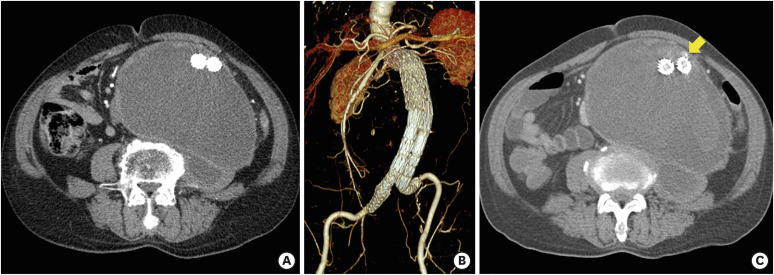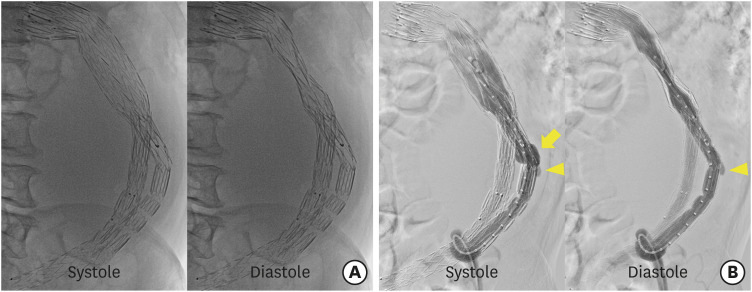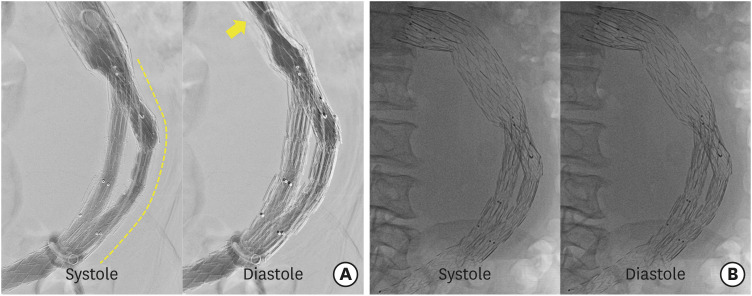Korean Circ J.
2022 Jun;52(6):478-480. 10.4070/kcj.2021.0333.
Pulsatile Compression of StentGraft by Re-pressurizing Aneurysmal Sac With Type III Endoleak After Endovascular Aneurysm Repair: A Case Report
- Affiliations
-
- 1Department of Cardiology, Gil Medical Center, Gachon University College of Medicine, Incheon, Korea
- KMID: 2530457
- DOI: http://doi.org/10.4070/kcj.2021.0333
Figure
- Full Text Links
- Actions
-
Cited
- CITED
-
- Close
- Share
- Similar articles
-
- Late Type 3b Endoleak Mimicking Type 2 Endoleak after Endovascular Aortic Aneurysm Repair
- Endovascular Treatment of Type II Endoleak Following Thoracic Endovascular Aortic Repair for Thoracic Aortic Aneurysm: Case Report of Squeeze Technique to Reach the Aneurysmal Sac
- Successful Endovascular Treatment of Delayed Type Ib Endoleak with Aortic Rupture after Endovascular Repair of Abdominal Aortic Aneurysm
- Late Type III Endoleak after Loss of Component Overlap after EVAR with AFX2 Device: A Case Report
- Surgical Experience of Persistent Type 2 Endoleaks with Aneurysmal Sac Enlargement after Endovascular Aneurysm Repair




